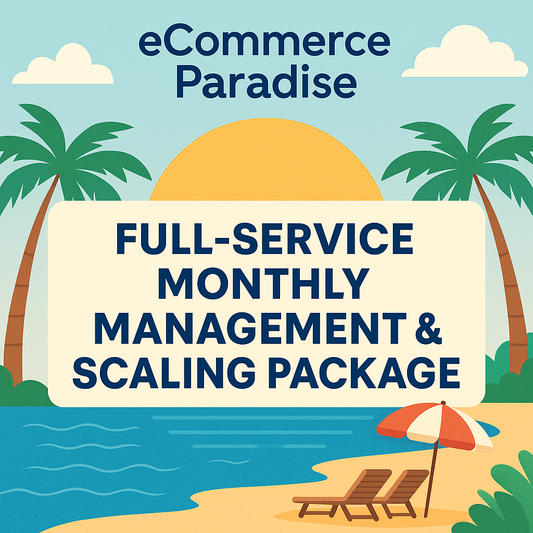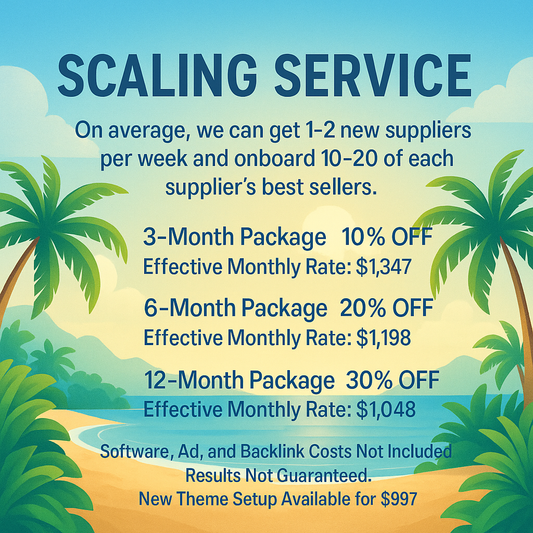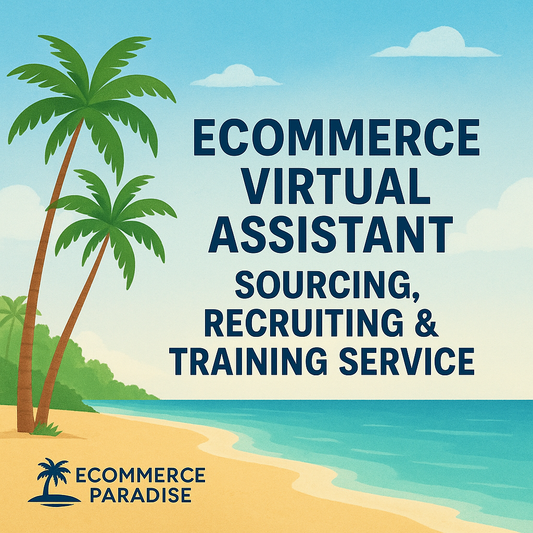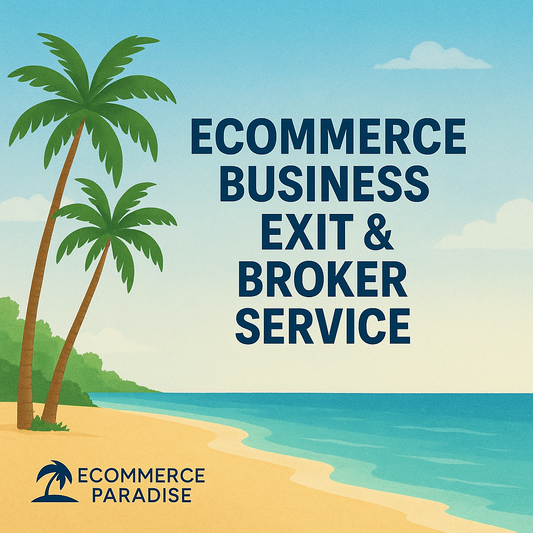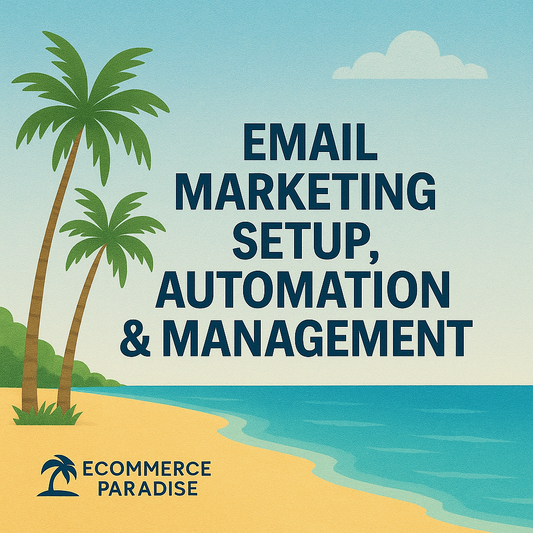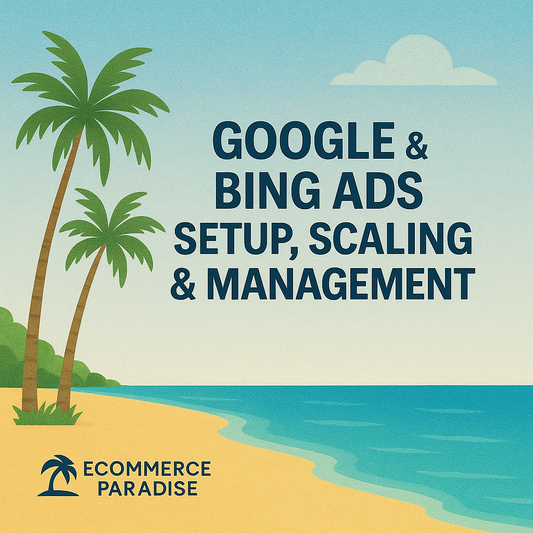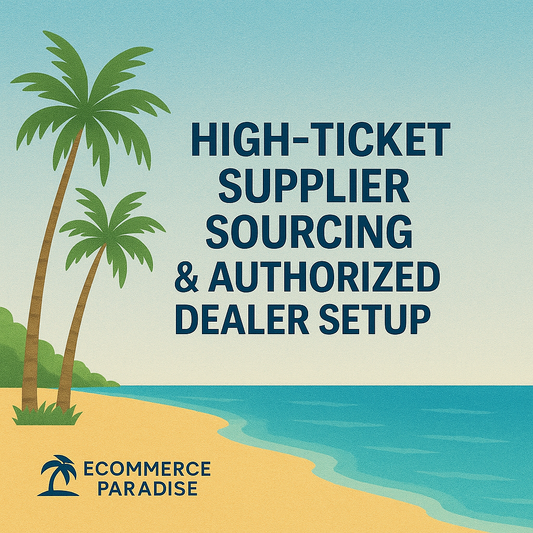
Boost Your Sales with Upselling & Cross-Selling Techniques
Hey there, Ecommerce Paradise community! Today, we’re diving deep into the art of upselling and cross-selling techniques that can truly skyrocket your high-ticket dropshipping store's performance. Whether you are just starting or you have been in the game for a while, mastering these strategies can make a massive difference in your sales and overall customer satisfaction. So, grab a coffee, sit back, and let’s explore how you can implement these techniques in your own business!
Understanding Upselling and Cross-Selling
Before we jump into how to effectively use upselling and cross-selling strategies, let’s clarify what these terms mean:
What is Upselling?
Upselling is the technique of encouraging customers to purchase a more expensive item, an upgrade, or an add-on to the original product considered. This can increase the overall sales value by enticing the customer to opt for a higher ticket item that adds more value to their purchase. For example, if a customer is looking at a high-quality sofa, suggesting a premium version with additional features (like extra cushioning or durability) is an upsell.
What is Cross-Selling?
Cross-selling, on the other hand, involves suggesting complementary products to go along with the original purchase. This is like when you buy shoes, and the seller suggests socks or a shoe cleaner kit. By cross-selling, you maximize the dollar spent while enhancing the customer’s shopping experience.
Why Upselling and Cross-Selling Matter
Now that we’ve clarified what upselling and cross-selling are, let’s discuss why they are crucial for your high-ticket dropshipping store:
- Increase Average Order Value (AOV): The primary goal of these techniques is to boost your AOV. When done right, you can significantly increase the total revenue generated from each customer.
- Enhance Customer Experience: By suggesting higher-value options or complementary products, you are essentially enhancing their shopping experience and making their purchase more satisfactory.
- Build Customer Loyalty: Educating your customers about better products or offerings creates trust and loyalty. If they see that you're looking out for their best interests, they're more likely to return.
- Stand Out in High Ticket Niches: In competitive high ticket niches, utilizing these techniques can help you differentiate from competitors, giving you an edge in the market.
Effective Techniques for Implementing Upselling and Cross-Selling
1. Leverage Product Bundling
One of the most effective strategies for cross-selling is product bundling. By grouping related items together, customers can see the value in purchasing them as a set rather than as individual pieces. For example, a fitness-equipment seller might bundle a treadmill with resistance bands and a workout guide. Not only does this provide customers with everything they need, but it also encourages a more significant purchase upfront.
2. Utilize the Power of Recommendations
Incorporate a “Customers who bought this, also bought…” section on your product pages. This subtly guides customers toward other items in your store that might pique their interest based on their current shopping behavior. By utilizing recommendation modules, you can encourage cross-selling opportunities effortlessly.
3. Implement Pop-Up Suggestions
Pop-ups can be a bit of a sensitive subject in terms of user experience, but when used wisely, they can be effective. When a customer adds an item to their cart, a well-timed pop-up can suggest an upgrade or a relevant accessory that enhances the main purchase. Make sure these suggestions are timely and relevant to avoid annoying your customers!
4. Timing is Everything
Understanding when to introduce upselling and cross-selling offers is crucial. Timing your offers appropriately—whether they appear at checkout or right after a purchase—is essential to increase acceptance rates. For example, consider offering upsell options right before the customer checks out, as they are already in a buying mindset.
5. Educate Your Customers
Many customers are unaware of the potential benefits of higher-ticket items or complementary products. Take the time to educate them on what they might be missing out on. Create content that highlights the advantages of these products, such as blog posts, product descriptions, or video content.

Best Practices for Upselling and Cross-Selling
Now that we’ve covered several effective strategies, let’s look into some best practices you should follow:
1. Know Your Audience
Segment your audience and analyze their purchasing behavior. Use this data to tailor specific upsell and cross-sell opportunities that align with their preferences. This personalized approach will significantly improve your conversion rates.
2. Focus on Quality Over Quantity
When recommending additional products or upgrades, focus on quality offerings that truly enhance the shopping experience. Customers are less likely to respond positively to upsells and cross-sells that seem irrelevant or unnecessary.
3. Offer Time-Sensitive Discounts
Creating urgency encourages customers to act quickly. Consider offering limited-time discounts for upsells or cross-sells during the checkout process. Such prompts can effectively convert hesitant buyers into customers ready to complete a purchase.
4. Test and Optimize
Don’t be afraid to experiment with different upselling and cross-selling techniques to see what resonates most with your audience. Use A/B testing to assess the effectiveness of various approaches and optimize your strategies over time.
Real-World Examples to Inspire You
For those of you still on the fence about incorporating upselling and cross-selling techniques, let’s take a look at a few real-world examples that effectively demonstrate these strategies:
1. Amazon
Amazon is the king of upselling and cross-sells. The site’s “Frequently bought together” and “Customers who viewed this item also viewed” sections masterfully guide customers to related products. They also excel at upselling through their “Recommended for you” sessions based on browsing history, ensuring they always cater to individual preferences.
2. Shopify Stores
Shopify stores across various high-ticket niches employ upselling and cross-selling methods in distinct ways. By showcasing complementary items and premium alternatives right in the product pages, these shops enhance customer engagement while cleverly increasing their AOV.
3. Meal Kit Companies
Many meal kit companies effectively use these techniques. For instance, they may offer upsells like gourmet spices or cooking tools while cross-selling items like drinks or desserts. By emphasizing the values of these add-ons, they enhance their customer’s overall culinary experience, making them return customers.
Wrap It All Up with a Flourish
Implementing upselling and cross-selling techniques can be a game-changer for your high-ticket dropshipping store, especially in competitive high ticket niches. By understanding your audience and utilizing effective strategies, you can increase your average order value and boost customer satisfaction simultaneously. So, don’t wait any longer—start integrating these techniques into your sales funnel and watch your business flourish! With the right approach, success is just around the corner—let’s take your store to new heights together!





